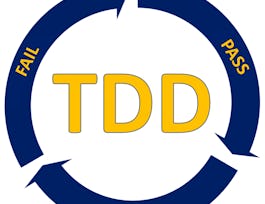In this MOOC, we will learn about TOR basic concept and see how they protect the security and privacy of users and resist censorship. We will examine how TOR realize the anonymity and utilize its service by downloading and using Tor browser software. A recent attack on TOR’s application flow control called sniper attacks is analyzed. We introduce the hidden service provided by TOR and show how it can be denonymized. We will learn how to setup a hidden server to provide web service on AWS instance. We will also learn the best practices and operational security in providing the hidden services. We will learn how to manage the hidden server using Tor circuit and configure the web server not to reveal the software version information. We also show how it can be defended. To improve TOR’s performance, we discuss the cloud based TOR and their implementation.


Security and Privacy in TOR Network
This course is part of Advanced System Security Design Specialization
Taught in English
Some content may not be translated



Instructors: Edward Chow
5,817 already enrolled
Included with 
Course
(33 reviews)
Details to know

Add to your LinkedIn profile
17 quizzes
Course
(33 reviews)
See how employees at top companies are mastering in-demand skills

Build your subject-matter expertise
- Learn new concepts from industry experts
- Gain a foundational understanding of a subject or tool
- Develop job-relevant skills with hands-on projects
- Earn a shareable career certificate


Earn a career certificate
Add this credential to your LinkedIn profile, resume, or CV
Share it on social media and in your performance review

There are 4 modules in this course
In this module, we learn the basic concepts of Tor network for protecting the privacy of Tor users and how to use the Tor browser features to access the web sites while preserving the anonimity, change the entry guard and exit node of the Tor circuit, learn how to setup Tor software package on a Linux machine and start its service, and use torify to run network commands, such as ssh or curl command, but use a Tor circuit as an outgoing connection
What's included
4 videos4 readings3 quizzes1 peer review
In this module, we learn how the hidden service architecture and protocol work, and how to set up the hidden server to provide network services on the Tor network without revealing the public IP address. We also learn the best practice of managing the hidden server anonymously and hide the version information of web server, OS, and installed software packages.
What's included
3 videos1 reading2 quizzes1 peer review
In this module we learn the basic components of the censorship systems, the censor model and the related challenges. We learn to define the censor's sphere of influence and sphere of visibility, and their impact on the techniques that can be deployed by the censorship systems. We will be able to describe the basic components of the censor's attack model, explain different fingerprinting methods and evaluating their strength and weakness. We will study different direct censorship method and learn the limitations imposed upon the range of censorship actions.
What's included
5 videos5 readings6 quizzes
In this module, we will learn the two main functional components of censorship resistance system (CRS) and explain the steps to establish the CRS communications. We will understand the operating requirements for establishing the CRS communications and learn the techniques for hiding information and avoid tracking using CRS channels. We will learn the basic CRS properties shared by CRS' and their purposes. We will comprehend different methods for obtaining CRS credentials and reduce faking/testing of them. We will be able to deploy different schemes for resisting active probing, identify different schemes to establish user trust. We will learn how to implement methods for evading censor detection and blocking. We will understand various methods for protecting publisher information and current open and active CRS research areas.
What's included
5 videos5 readings6 quizzes
Instructors

Offered by
Recommended if you're interested in Computer Security and Networks

University of Colorado System

Board Infinity

LearnQuest
Why people choose Coursera for their career




Learner reviews
Showing 3 of 33
33 reviews
- 5 stars
54.54%
- 4 stars
27.27%
- 3 stars
6.06%
- 2 stars
0%
- 1 star
12.12%
New to Computer Security and Networks? Start here.

Open new doors with Coursera Plus
Unlimited access to 7,000+ world-class courses, hands-on projects, and job-ready certificate programs - all included in your subscription
Advance your career with an online degree
Earn a degree from world-class universities - 100% online
Join over 3,400 global companies that choose Coursera for Business
Upskill your employees to excel in the digital economy
Frequently asked questions
Access to lectures and assignments depends on your type of enrollment. If you take a course in audit mode, you will be able to see most course materials for free. To access graded assignments and to earn a Certificate, you will need to purchase the Certificate experience, during or after your audit. If you don't see the audit option:
The course may not offer an audit option. You can try a Free Trial instead, or apply for Financial Aid.
The course may offer 'Full Course, No Certificate' instead. This option lets you see all course materials, submit required assessments, and get a final grade. This also means that you will not be able to purchase a Certificate experience.
When you enroll in the course, you get access to all of the courses in the Specialization, and you earn a certificate when you complete the work. Your electronic Certificate will be added to your Accomplishments page - from there, you can print your Certificate or add it to your LinkedIn profile. If you only want to read and view the course content, you can audit the course for free.
If you subscribed, you get a 7-day free trial during which you can cancel at no penalty. After that, we don’t give refunds, but you can cancel your subscription at any time. See our full refund policy.


